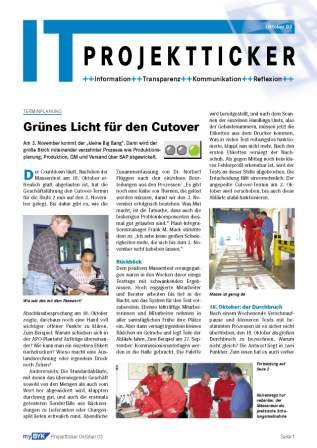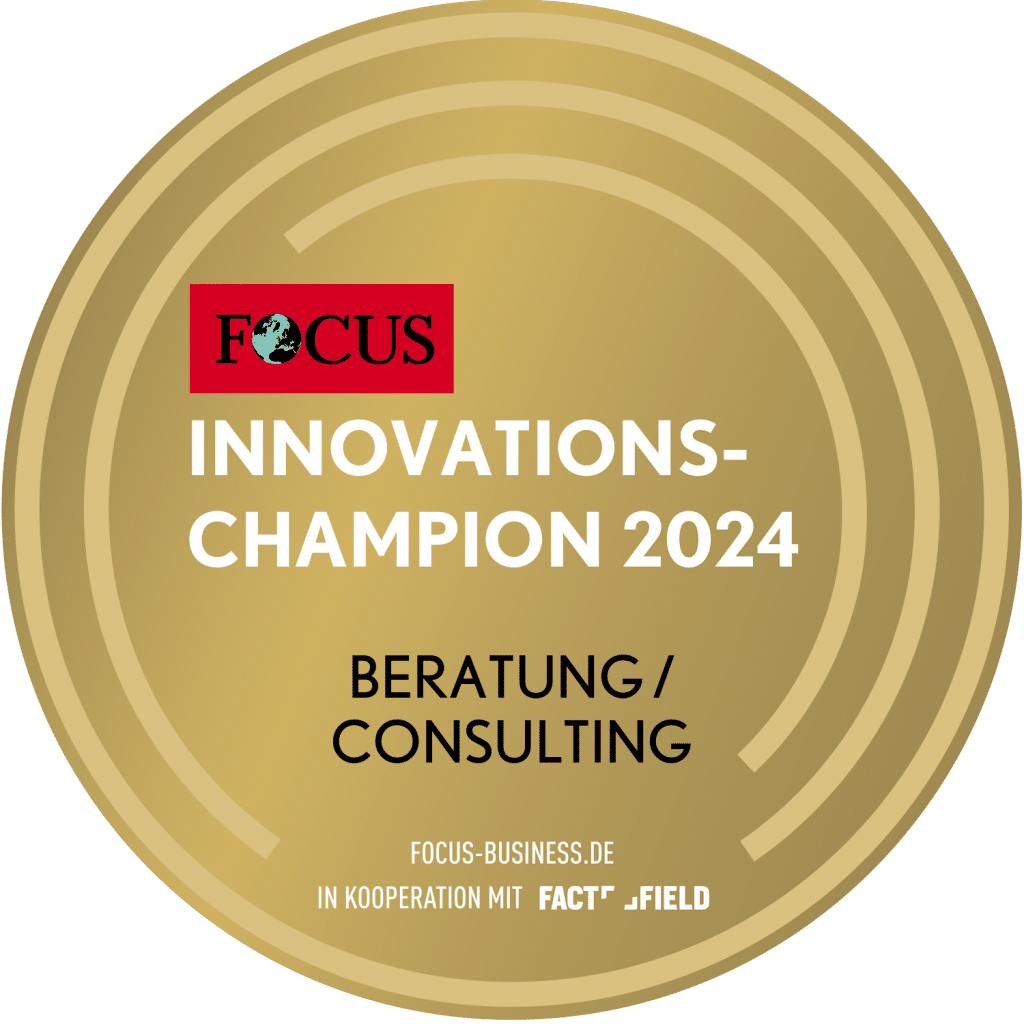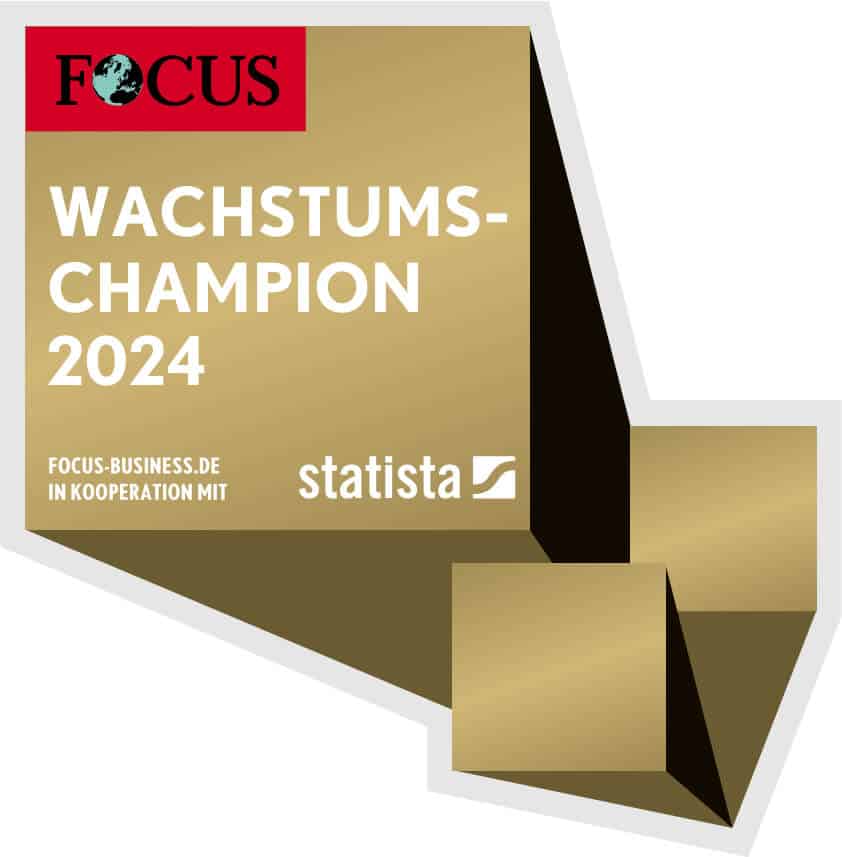Projects bring about and demand changes in the company, be it in work processes, IT or company structures. A positive attitude towards these changes is the key factor to really and permanently implementing the desired project results in the organization. Good information and communication can make a decisive contribution to securing this acceptance, a project and thus the project's success. How all this succeeds and what Targeted project marketing can contribute to successful change management is explained in this article.
Projects don't have it easy - the challenge
Only if the project participants are convinced of the objectives will they make a committed contribution. Only if the stakeholders understand the project will they make the right decisions and provide rapid assistance in the event of unexpected problems. Only if future users see the benefits of the new processes and IT will they advocate their use.
Projects are often perceived as a disruptive factor by those around them: They upset the hierarchy, and they demand good employees and money. The challenges in terms of content are even more serious: Projects cause and require changes, whether in work processes, IT or company structures. This quickly meets with resistance because, firstly, people are creatures of habit per se, secondly, the training and changeover effort is an additional burden and thirdly, many people have already experienced projects that brought more trouble than relief.
Rejection or lack of interest is a A challenge for project management. Internal resignation, active resistance or secret sabotage are among the worst things that can happen to a project. And the attitude: "Well, if they think so, then we'll just do it..." will not exactly inspire success. Only when the key stakeholders (more on this later) have the feeling that something is being done in the interests of the company and their own interests will the project receive maximum support. Good project marketing is the effort to create, increase and secure the necessary acceptance with suitable marketing methods - above all solid information.
Unwanted side effects - for project team and consultant
In addition, there are some thoroughly undesirable side effects for the project team: project marketing not only improves the project results, but also the working atmosphere. After all, experiencing that one's own performance is seen is fundamentally motivating. It also strengthens the reputation of the project and the people involved, increases the chance of being noticed by top management and therefore of promotion (internal project team) and new contracts (consultants).
Another advantage that is often overlooked: Project marketing can make a decisive contribution to quality assurance by actively organizing qualified feedback. Of course, it is sometimes not easy to distinguish between a lack of willingness to change and justified constructive criticism. But those who make the effort have an effective early warning system at their disposal.
What does project marketing cost?
The unsatisfactory answer here is that it depends. If it can be assumed that the stakeholders have considerable reservations about the project objectives and the target groups are large, one or two full-time employees may be useful. Normal IT projects can achieve good results for as little as five days per month. No further costs are incurred if only company media and premises are used.
When there is a great need for change and a high level of skepticism among the target groups, good project marketing is worth its weight in gold. Nevertheless, the success of marketing is difficult to quantify directly in euros. Sometimes it is easier to show yourself and your sponsors the consequences of inaction:
- How much does it cost if 20 percent of employees are annoyed and switch to "pull through" and these 20 percent perform less? If some even resign and have to be replaced?
- What rewards should be given to employees to achieve the same motivating effect as a well-made contribution that recognizes their good performance?
If this is still not enough to get the necessary funding because "marketing" sounds so superfluous, it's time to sell the approach under a different name, such as risk management or Training. Because what is often the biggest risk to achieving project goals? A lack of acceptance. What is needed to avoid teething problems and frightened customers? Empowerment.
Which project needs marketing?
For some projects, it is sufficient to inform those affected directly in a personal conversation. Others require a professional, systematic strategy and implementation. The following criteria provide an indication of the appropriate intensity:
- a) The project affects many employees.
b) The changes are far-reaching.
c) Rejection is to be expected.
d) There are already internal media.
e) The jobs are very secure.
f) There are more than 500 employees in the company and/or the company has more than one location.
g) The project brings important benefits for customers.
Because
- The more people affected, the less chance there is of reaching them personally.
- The deeper the changes go, the greater the resistance usually is.
- The greater the resistance, the more important the communication.
- The presence of internal media is a sign that the use of media makes sense here.
- The more secure the jobs, the less willing people are to change.
- The more employees and locations, the more important media are to reach all employees.
- The more benefits for the customer, the more actively the project results can be used externally.
Depending on how the project management views the answers, it is important to weigh up the various factors and control the flow of information in terms of change management.
Marketing - for whom and why?
Project marketing is like the project itself: Only if the objectives are clearly defined will you get the best out of the resources used. So who are the addressees of the marketing activities and what do we as project managers want to achieve with them?
Project customers
The (future) customers are usually the most important target group, especially the users in IT projects. The aim of project communication: customers should have a positive attitude towards the project and the products and be happy to contribute to its success - a key factor for any successful rollout! In the case of changes that have a profound impact on daily work, such as ERP implementationsThis can only succeed if emotional aspects are addressed, such as the fear of no longer being able to cope with the new world.
Management
Executives and top management are important for the project in two ways. Firstly, there are those who are directly involved in some way. Project marketing helps to ensure that they are well-disposed towards the project, support it when necessary and provide the necessary resources. On the other hand, ill-informed decision-makers can become a dangerous disruptive factor. If an unexpected decision from the very top, such as a budget or resource cut, torpedoes the progress of the project, it is usually extremely difficult to reverse it. For this reason, every project manager would do well to keep the management levels informed about the importance of the project and the current procedure and to use direct contacts to find out whether something might be brewing.
People with points of contact to the project
The same applies to those who are not directly involved in the project, but who have points of contact with it, such as employees in the finance or HR department or employees who have to work overtime because colleagues have been pulled into the project. They should also support the project and not hinder it.
Sometimes it is not so easy to identify those multipliers who have no direct influence on the project, but do have influence on other stakeholders: Managing directors often delegate a lot to their assistants. The communications department is not only an official multiplier, but also an informal news exchange. Project marketing aims to win over these important people for the project. They should promote a positive perception of the project and view the project management as a communication partner.
Employee representative
In many IT projects, there are topics that require approval, for example when it comes to workplace design or New types of data documentation goes. A good relationship with employee representatives helps to find pragmatic solutions in such cases. In addition, employee representatives can campaign more credibly for unpopular but necessary decisions than anyone else.
Employees without points of contact to the project
Other interested parties in the company should also know what is happening in the project, why it is being carried out and that the resources are well invested here. What's more, if you have nothing to do with the project today, you could be part of it tomorrow!
External public
If external target groups have points of contact with the project, their approach should be carefully considered. You can count on the support of the communications, marketing and investor relations departments for this. Those responsible for project marketing have the task of providing their colleagues with comprehensible, interesting material.
Important content in the project life cycle
Jumped as a tiger, landed as a bed-head - this is the popular saying for what should never happen in project marketing. There will be times when there is more communication - for example at the start of a project or before a rollout - and times when there is less. But being loud first and then not hearing anything for weeks on end is not an option. The elements described below ensure the necessary continuity for successful project marketing.
Meaning, purpose and benefits of the project as starting information
If all stakeholders have understood what the project is supposed to achieve and by what means, and have a positive attitude towards it, a lot has been gained. What's more, first impressions are crucial - just like in real life. A sympathetic presentation of the project at the start is therefore extremely important! The choice of words and style can help to create a positive emotional impression of the project.
Negatives at the beginning
While describing a positive project vision is very popular, discussing negative changes is more difficult. But it doesn't help, you have to get through it. Examples: New IT means the end of a popular old system. New software requires new know-how and nobody wants to learn. The rule here is: don't hide things, but actively communicate them until the majority at least sees them as unavoidable. If you avoid this task, you will have to pay for it later on when someone repeatedly crosses the line and calls the project into question.
Filling the initial information gap
There is another challenge to overcome in the initial phase: When important changes are imminent, everyone is most interested in what this means for him or her personally. But this may remain unclear for a long time. This information gap needs to be bridged, because information about the procedure and timetable creates trust.
Communicate results
Interesting project results should be publicized immediately. Once the grapevine has commented on a topic, the opportunity to shape its perception and actively steer the discussion is lost. It is difficult to get rid of negative (pre-)judgments.
Also important: it is not just the bare result that is important, but also the background. Knowing why the decision was made, how it was made, what advantages it has for which target groups and why supposedly better alternatives were rejected can significantly increase acceptance.
People in the project
Projects are decided, planned, implemented and, in the worst case, brought to an end by people. In addition to providing information about who is responsible and what role they play - including the possibility of contact - space should therefore be given to the human aspect. This can be done by presenting people with special achievements, giving those affected a voice with their fears, hopes and experiences and much more.
(Correctly dosed!) Celebrate success
When successes have been achieved, there is every reason to report on them. But be careful: the right tone is crucial. Potential dangers: A new process that some people are still struggling with is unilaterally hailed as a success. The laudatory report by the project manager (who wants to thank his people for the good performance) is seen as self-congratulation of the team and the like.
Critical voices

Giving reservations and critical questions an adequate place is a prerequisite for credibility and trust. Even if you find the complaints voiced inappropriate, it is often important that the "people" know that "those at the top" are aware of the problems. Last but not least, criticism offers a good opportunity to name possible solutions or explain why a decision is being adhered to despite valid counter-arguments.
Critical voices can become particularly loud if there are problems in the project, for example if the go-live date has to be postponed. In this case, active communication can be particularly difficult because there are already enough other things to do. On the other hand, the Crisis communication a valuable tool to protect the project's reputation and motivation from damage despite problems. In retrospect, the description of crisis management can be a really good story.
The best channels for project marketing
The decision as to which media and channels are best suited to address the various target groups should be strongly based on the cost-benefit principle. You can save money here - or spend a lot of money unnecessarily. For example, it is by no means necessary to publish your own project media and then design them elaborately. Established channels often do the same and, especially in critical situations, simplicity works better than opulence.
The most common communication channels in IT projects are:
- Electronic media such as intranet, webinar, social media, manual
- Printed media such as project information or existing company media, project brochure, system flyer, quick guide
- Dialog events such as the marketplace, workshops, information at management conferences, presence at works council meetings, presentations, discussion rounds, open evenings.
As simple as these tools may seem, they often prove to be tangible orientation aids and contribute to successful implementation in terms of successful change management and rollout.
Conclusion: Project marketing can be decisive for success
Project marketing is not always easy, but it is always worthwhile. Professional support helps to achieve the required quality. Motto for tight budgets: Better to do less, but do it well. For those who believe they can do without project marketing altogether the old wisdom of Paul Watzlawick "You can't not communicate."
(Cover image: © REDPIXEL | fotolia.com)


